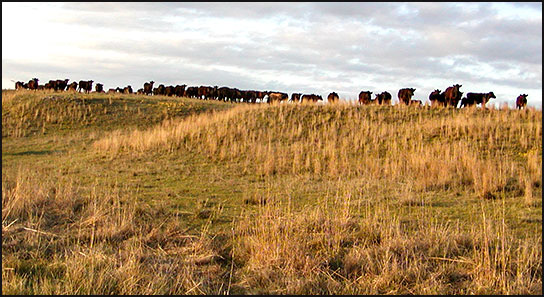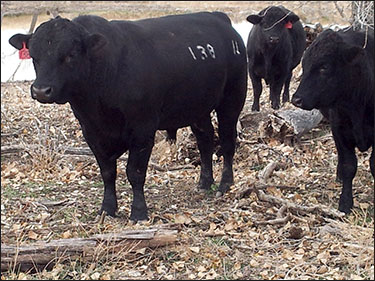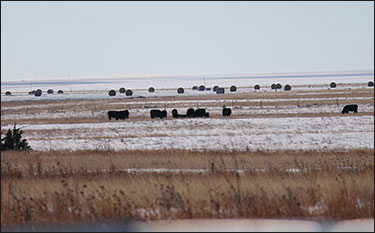
Growing More Grass
with Intensive Grazing
Through rest and rotation, Kansas cattleman increases ranch carrying capacity fourfold.
Kent Powell and wife Linda raise registered-Angus cattle on their ranch near Kalvesta, Kan. — a ranch that has been in Kent’s family since his great-grandfather started farming there in 1887.
“For much of our history, we farmed wheat and a little milo. When faced with the decision to upgrade equipment and hire help to continue farming — or change direction — we chose to convert our farmland to grass,” says Kent.
“We started planting grass through the Conservation Reserve Program (CRP). We put the first 1,000 acres in CRP for 10 years in 1986. As each contract expired, that land was used for grazing, and we signed up more farmland. Over the past 30 years we’ve put more than 3,000 acres of our farm back into grass,” he explains.

Kent and Linda Powell developed a workable grazing system for their purebred Angus cattle. Pictured is a group of bulls that have been grown on pasture.
Kent and Linda developed a workable grazing system for their purebred Angus cattle. They buried more than 10 miles of pipeline, drawing water from two wells. Now, they have 18 watering points, with the potential for 27.
“Watering points are centrally located, usually in the center of a quarter or a section. Paddocks are in various shapes; we have some wagon-wheel designs with water in the center, and some that go with the contours of the land, and some just use old fencelines. We’re experimenting with paddocks ranging from five to 160 acres. We try not to leave cattle on any one piece for more than seven days, and we keep them moving,” says Kent.
“We have five to eight cells per watering point. If we do everything right, it’s at least a year before we hit the same pasture again,” he continues. “We try to remain flexible and monitor the grass. The cattle are a ranch-management and forage-marketing tool. When our weather was really dry and the grass didn’t even green up, we still had a year of grazing in those rested pastures.”

“Watering points are centrally located, usually in the center of a quarter or a section. Paddocks are in various shapes; we have some wagon-wheel designs with water in the center, and some that go with the contours of the land, and some just use old fencelines. We’re experimenting with paddocks ranging from five to 160 acres. We try not to leave cattle on any one piece for more than seven days, and we keep them moving,” say Kent Powell.
The cattle adapted to cell grazing and look forward to moving, he says. “There is nothing more rewarding than watching a calf that’s just a few days old rotating paddocks with its mother. The cows know when it is time to move. When you are in synch with the needs of the cows, they tell you what needs to be done.”
Kent notes the cattle can be easily managed by one person using this management system.
“Our 12-year-old daughter can rotate the cows simply by opening a gate and honking a couple times,” Kent says.
“Through grazing management, our ranch is able to support a cow on five acres per year in country that is supposed to take 10 acres per cow for six months [of] summer grazing. I think this is a significant improvement. I’ve had neighbors knock on my door, wanting to rent my grass because they think I’m wasting it, but nothing here is wasted. The key to growing more grass is rest and recovery.”

Editor’s Note: Heather Smith Thomas is a freelance writer and cattlewoman from Salmon, Idaho.





